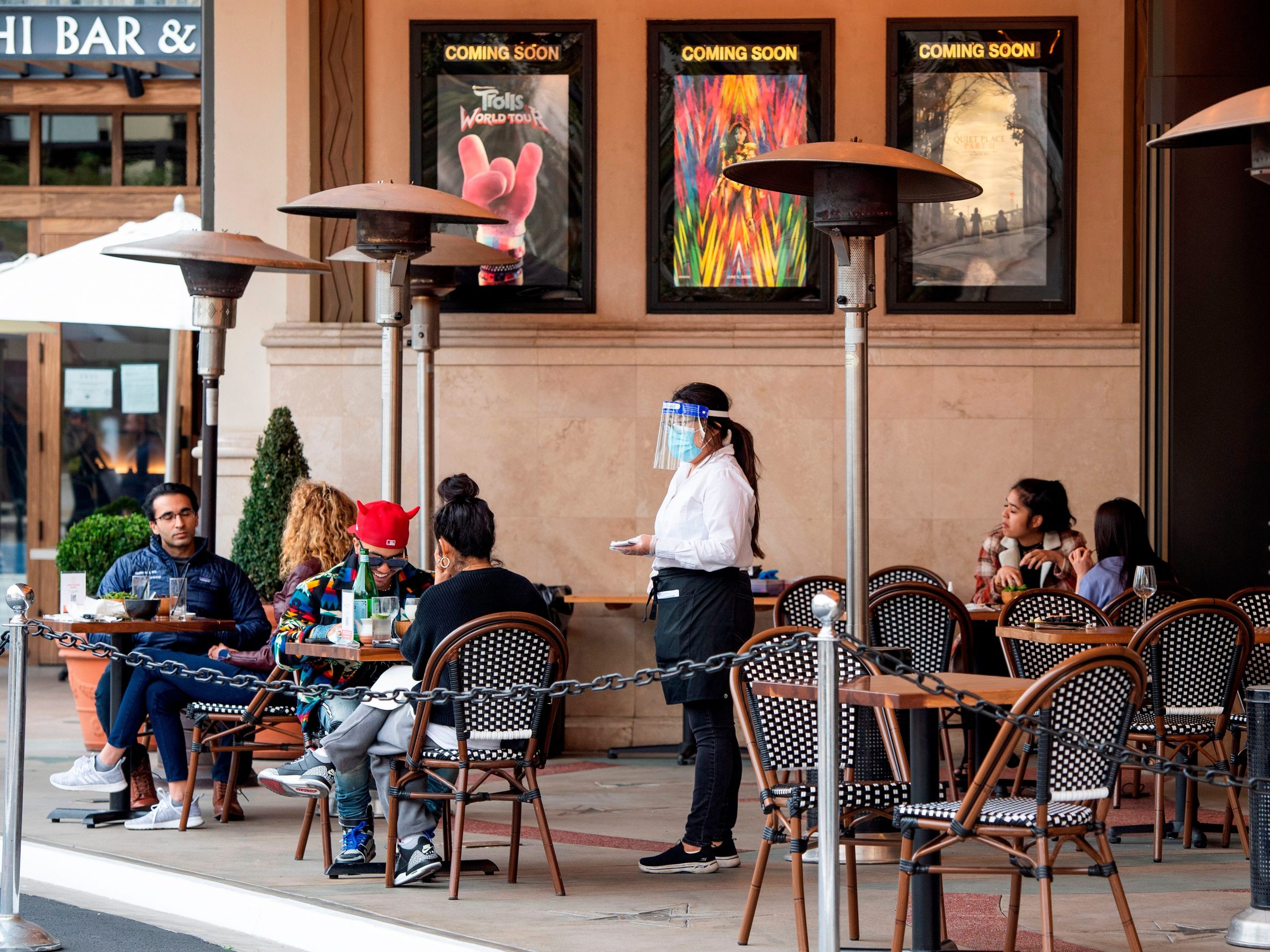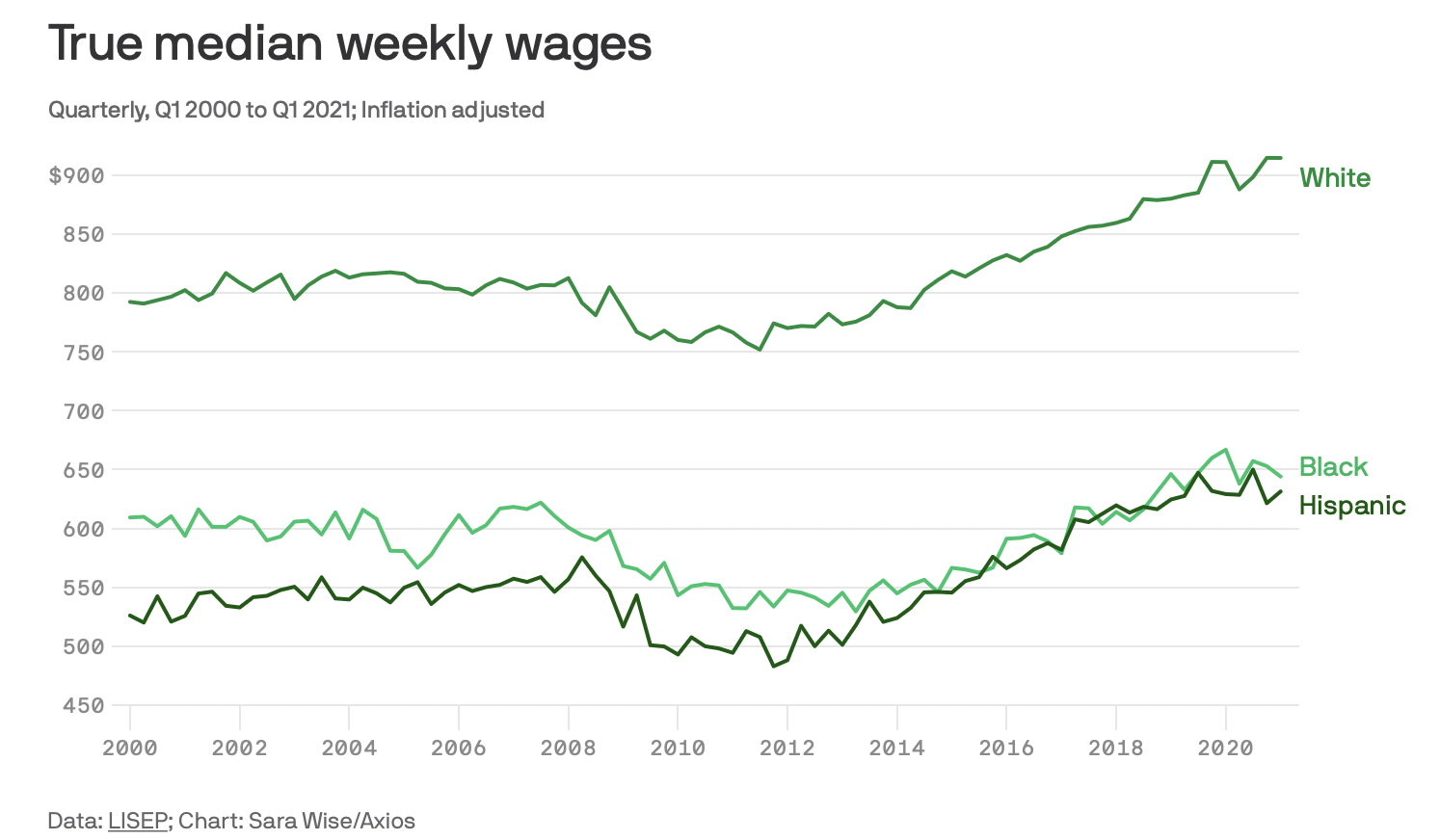
Valerie Macon/AFP/Getty Images
- The first three months of 2021 were the best quarter for wage growth since at least 2001, per BLS data.
- But weekly median wages for white Americans were 42% higher than Black Americans' over this period, Axios reports.
- And with some economists concerned about inflation risk, wages and prices are rising together.
- See more stories on Insider's business page.
With vaccinations ramping up across the country and the economy reopening, people's wages are going up. America hasn't seen this kind of wage growth in 20 years.
Bureau of Labor Statistics data on the ECI, which measures the change in total employment compensation each quarter, shows that the first three months of 2021 were the best quarter for wage growth since at least 2001. According to the BLS data, wages and salaries increased by 3% for private industry workers for the 12-month period ending in 2021, and 2.7% for civilian workers.
-George Pearkes (@pearkes) April 30, 2021
But they shot up more for white Americans than any other group.
Axios reported on similar data on Thursday, citing the Ludwig Institute for Shared Economic Prosperity on data showing the gap between white Americans' wages and everybody else's grew larger in the first quarter. It found that white Americans now have true weekly median earnings of $914, which is 42% higher than Black Americans and 45% higher than Hispanic Americans.

Axios
A Fitch report released on Thursday found that in almost every US state, jobs increased in the last month, the highest month-over month increase since September, but the recovery is uneven.
"Positive job gains in March pushed several states' employment recovery to over 50% of the jobs lost at the peak of the pandemic," the report said. Illinois, Hawaii, New Mexico, California, Wyoming, Louisiana, and Alaska remain below 50% jobs recovery, it said.
In addition, Fitch said labor force exits still remain unusually high, and employment recovery is a "key factor" in driving overall economic and tax revenue recovery for states. Insider reported on April 16 that while 9.7 million people are actively seeking work, there are four possible reasons that businesses are still struggling to hire: unemployment benefits disincentivizing work, COVID-19 health concerns, the need for at-home care, and holding out for higher wages.
Another potential dark cloud in the news about surging wage growth is the economic bogeyman that has threatened to stalk the early months of the Biden era: inflation. Critics of President Joe Biden's large spending plans, notably Harvard professor and former Obama advisor Larry Summers, have warned that pumping so much into the economy could create inflation at a rate unseen since the "Great Inflation" of the 1970s. A key aspect of that inflation was wages rising at faster and faster rates, and prices of goods in the economy rising along with them.
Insider's Ben Winck reported on Thursday that the PCE price index - a popular gauge measuring inflation - rose from 1.7% to 3.5% in the first quarter, as prices for "personal consumption expenditures" rose to a near-decade high. The Federal Reserve insists that these spikes are "transitory" and will quickly fade.
"An episode of one-time price increases as the economy reopens is not the same thing as, and is not likely to lead to, persistently higher year-over-year inflation into the future," Fed Chair Jerome Powell said on Wednesday. "It is the Fed's job to make sure that does not happen."